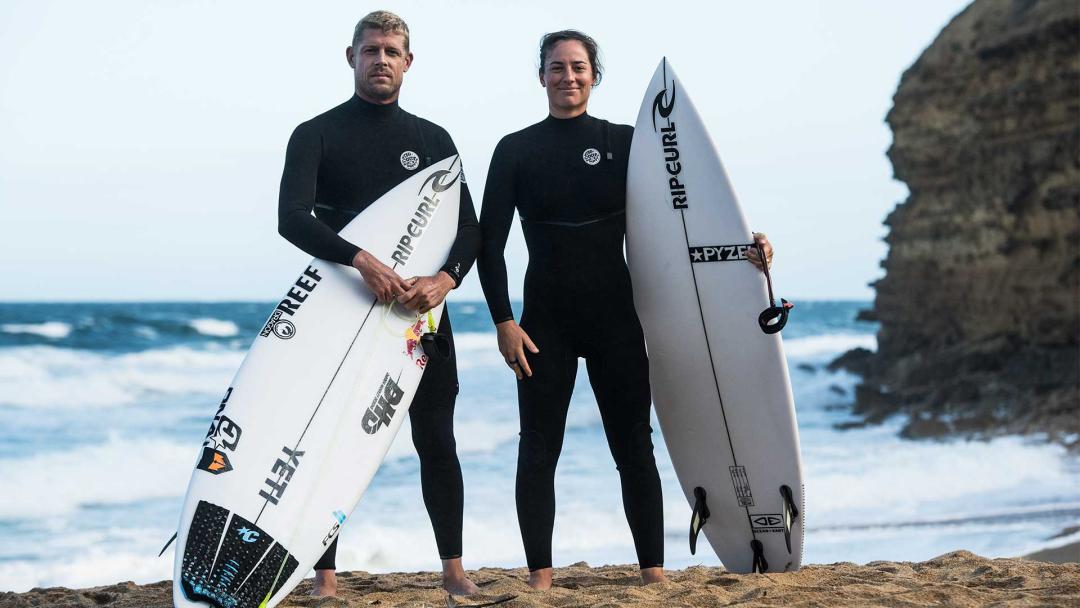

The Ultimate Wetsuit Thickness Guide


How to Choose the Right Wetsuit for Surfing in Different Temperatures
When surfing in cold water, having the right wetsuit can make a big difference in your comfort and performance. Wetsuits are designed to keep you warm by trapping a thin layer of water between your skin and the suit, which your body then heats up. But if you choose poorly you can overheat in a suit too thick, or end up shivering without ample rubber. Here are some tips on how to choose the right wetsuit for surfing in different water temperatures:


Determine the water temperature:
The first step in choosing the right wetsuit is to know the temperature of the water you'll be surfing in. You can check local weather reports or ask locals for the current water temperature. You can also see what others are wearing in the water at that time of year and tune in to the subtle changes in their choices that occur with the seasons.


Select the appropriate thickness:
Wetsuits for surfing are available in different thicknesses, typically ranging from 2mm to 6/4mm. The first number denotes the thickness on the chest and legs, the second number relates to the thickness of the arms. Generally, arms are made slightly thinner to allow for ease of paddling and maneuverability. As a general rule, the colder the water, the thicker the wetsuit you'll need. For water temperatures 15 degrees celcius and above, a 3/2mm wetsuit is usually sufficient. For water temperatures in the mid 10s, a 4/3mm wetsuit is a good choice. And for water temperatures below 7 degrees, a 5/4mm or 6/4mm wetsuit is recommended.


Consider the duration of your session:
The length of your surfing session can also affect the type of wetsuit you should choose. If you'll be surfing for long periods of time, you may want to opt for a thicker wetsuit to provide more insulation and warmth. On the other hand, if you'll only be in the water for a short period of time, a thinner wetsuit may be more comfortable.


Swell period and crowd factor:
The swell period and crowd factor can also play into it. If there are non-stop waves and only a few people out, chances are you’ll be frantically paddling and catching more waves; hence your body temp will be high and a thinner wetty will do the trick. Conversely, if there are 40+ people out in the water and the waves are slow, you’ll be cooler as you patiently wait for your turn, and a bit of extra rubber will be ideal.


Pay attention to fit:
A wetsuit that fits well is crucial for keeping you warm while surfing. Look for a wetsuit that fits snugly but not too tightly, as it should be easy to move your arms and legs without feeling restricted. Make sure a fullsuit or steamer wetsuit covers your entire body, including wrapping your wrists, ankles, and neck, to prevent cold water from seeping in.


Consider additional wetsuit accessories:
Most surfers in colder climates will incorporate one or more additions to their kit in the depths of winter. Hoods, gloves, and boots are epic keeping you warm, especially because so much body heat is lost through your head and extremities. These can be especially useful if you'll be surfing for a long time, if or if you tend to get cold easily
Check Out The Latest: Fusion Flashbomb Wetsuits
Stay warmer for longer in our revolutionary wetsuit with seams that don't leak. The Rip Curl FlashBomb Fusion wetsuit with Fusion Dry Seam Technology features the most technically advanced seam construction we have ever created to create a stronger seal without the need for stitching that can lead to water seepage over time (96% stitch free construction). Built using 100% E7 Flash Lining, it’s the ultimate balance of flexibility, warmth and durability. Experience over 50 years of innovation fused into one wetsuit. No stitch = no leak = no problem.
Find Out More
By following these tips, you can choose the right wetsuit for surfing in different water temperatures and ensure that you stay comfortable and warm while on The Search.



